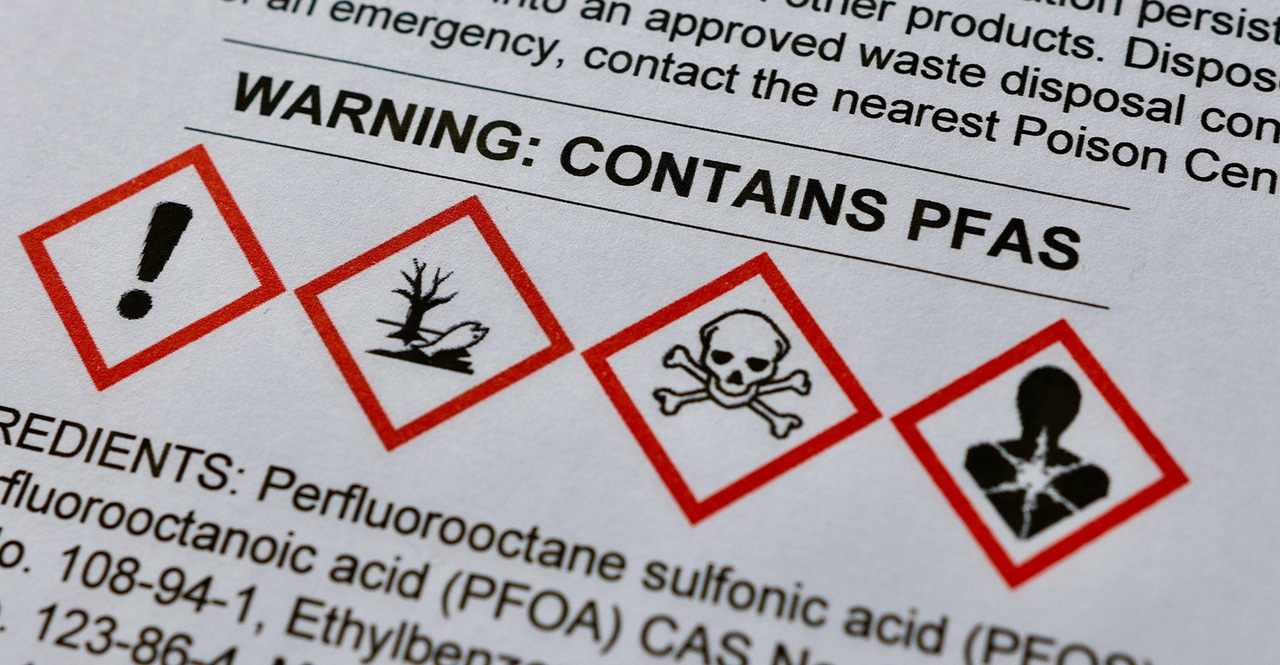EPA’s PFAS Hazardous Substance Rule on the Horizon
In a few days (July 8, 2024), an Environmental Protection Agency (EPA) rule designating two PFAS compounds—PFOA and PFOS—as hazardous substances will take effect. The legislation, under the Comprehensive Environmental Response, Compensation, and Liability Act (CERCLA), is stirring a whirlwind of questions from landfill operators concerned about their potential liability, obligations, and impact on their bottom lines.

In a few days (July 8, 2024), an Environmental Protection Agency (EPA) rule designating two PFAS compounds—PFOA and PFOS—as hazardous substances will take effect. The legislation, under the Comprehensive Environmental Response, Compensation, and Liability Act (CERCLA), is stirring a whirlwind of questions from landfill operators concerned about their potential liability, obligations, and impact on their bottom lines.
Several prominent industry leaders broach some of waste facility operators’ most pressing questions in this Waste360 article. Some of them are: Will I face more restrictions on PFAS discharge limits? What will I be required to report and to whom? Will my costs rise? What should I be doing now?
Let’s start with an overview of the rule’s main components, with more details found here. Be aware that landfills and wastewater treatment facilities may be affected by this action; there are still uncertainties about exactly what will be expected of them.
Facilities held accountable must report releases of PFOA, PFOS, their salts, or structural isomers at or above one pound within 24 hours. They will be required to report these events to the National Response Center (NRC), the State Emergency Response Commission (SERC), and in some cases other parties.
When PFOA or PFOS releases of one pound or more occur, facility owners or operators held accountable must “provide reasonable notice to potential injured parties” via local media in the “affected area.”
EPA may recover costs incurred for investigations and PFOA and PFOS cleanup, shifting financial obligation from the Superfund to parties deemed responsible for contamination.
When remediation is deemed necessary, if PFOA or PFOS are found on site after cleanup, five-year follow up reviews will be required.
Authority will extend to states that regulate CERCLA-designated hazardous substances, enabling them to require remediation of these contaminants.
Still EPA’s designation of PFOA and PFOS as hazardous substances leaves unanswered questions and uncertainties. For instance, alongside the rule, the agency released a PFAS Enforcement Discretion and Settlement policy stating it does not intend to pursue entities where “equitable factors do not support seeking response actions or costs under CERCLA.”
The policy language indicates that EPA plans to use its enforcement discretion to not recover cleanup costs from municipal solid waste (MSW) landfills. Mention of MSW landfills, however, also includes the term “publicly owned/operated” landfills, which does not take into account National Waste & Recycling Association (NWRA) members, who represent about 70 percent of the private sector waste and recycling market, says Anne Germain, chief operating officer and senior vice president of Technical and Regulatory Affairs, National Waste & Recycling Association.
“However [EPA’s PFAS discretion policy] includes language that other parties might be provided enforcement discretion, including entities that perform public service roles in handling MSW, which would include NWRA members.
“This shows that EPA understands the issues we are facing. Unfortunately, policies can easily be reversed with a new administration or simply a change in priorities, whereas the rulemaking will remain,” Germain says and also notes it’s important to understand that MSW landfills will not be protected from third-party lawsuits.
“While we appreciate the discretionary enforcement policy, we still have concerns,” she says.
Bryan Staley, president and CEO of the Environmental Research and Education Foundation (EREF), anticipates the hazardous substance rule likely will not significantly impact non-hazardous landfills that might have certain PFAS levels.
“There has been commentary that landfills may not be highly scrutinized as they are one of EPA’s recommended disposal options for PFAS, and I don’t expect that to change when they update their guidance in the fall,” Staley says.
The new interim disposal guidance may emphasize incineration over landfill disposal, but that remains to be seen.
Though Staley does project with fair certainty rising costs over time. Early forecasts suggest that if landfills’ costs are passed on through tip fees, those fees could rise by 3 to 14 percent per ton. For every 1,000 tons of waste placed, that’s a $1.5 to $2 million increase annually.
“That [fee] will pay for additional and/or advanced treatment methods. However, we’re still early in the game to truly understand the long-term implications,” Staley says.
With the hazardous substance designation following on other PFAS crackdowns, Peter V. Spano II, president of waste consulting and brokerage firm Global Trash Solutions, advises his clients to get proactive to ensure compliance.
“The first priority should be conducting comprehensive audits. Understanding the sources and levels of PFOA and PFOS is fundamental, as it informs all subsequent actions and investments. Without this critical information, it would be challenging to make effective upgrades, train employees appropriately, or develop accurate compliance and response strategies.”
Among other steps, Spano suggests:
Investing in and upgrading waste management and treatment systems to handle hazardous materials.
Implementing comprehensive staff training programs on handling, disposal procedures, and safety protocols related to hazardous materials, specifically PFAS.
Implementing advanced monitoring technologies to detect PFAS in their processes and waste streams.
Engaging with environmental consultants and specialists to develop and implement robust compliance strategies.
Staying informed of regulatory developments and industry best practices related to PFAS management.
Creating and refining emergency response plans to address potential PFAS contamination incidents swiftly and effectively.
As PFAS regulations continue to evolve, they will have both financial and operational implications for waste pros, say many industry experts.
Among early impacts for most will be the addition of PFAS limits on their leachate discharge permits, projects Rick Gillespie, chief commercial officer of Revive Environmental, developers of PFAS destruction technology. Some states are already issuing stringent PFAS discharge limits for PFOS, PFOA, and other PFAS constituents.
In preparation, Gillespie advises, “One of the smartest investments we see is evaluating and implementing technologies to separate, concentrate, and destroy PFAS in landfill leachate.
“This can lead to higher operational costs but reduce the long-term liability associated with PFAS. Landfills that separate and destroy PFAS will be seen as innovation leaders because they break the PFAS cycle,” he says.
If PFAS are designated as hazardous under the Resource Conservation and Recovery Act (RCRA) [there is talk of this, but whether it will materialize is another unknown], landfills will have more processing and reporting requirements, further increasing operational costs and complexity. Some landfills already refuse to accept PFAS-containing waste streams to prepare for possible standards and liability risks.
The next few years are expected to bring more changes.
Already some state and local regulators are implementing plans to address PFAS in soils and liquid waste streams.
“Going ahead, the promulgation of federal drinking water standards for PFAS will increase regulatory pressure on industries that discharge PFAS from their facilities. And landfills are looking for PFAS discharge limits to better understand how they will address PFAS moving forward, Gillespie says.
“[Stakeholders] need clarity on the varying regulations to assess how clean is clean enough.”
Read more about:
United StatesAbout the Author
You May Also Like




